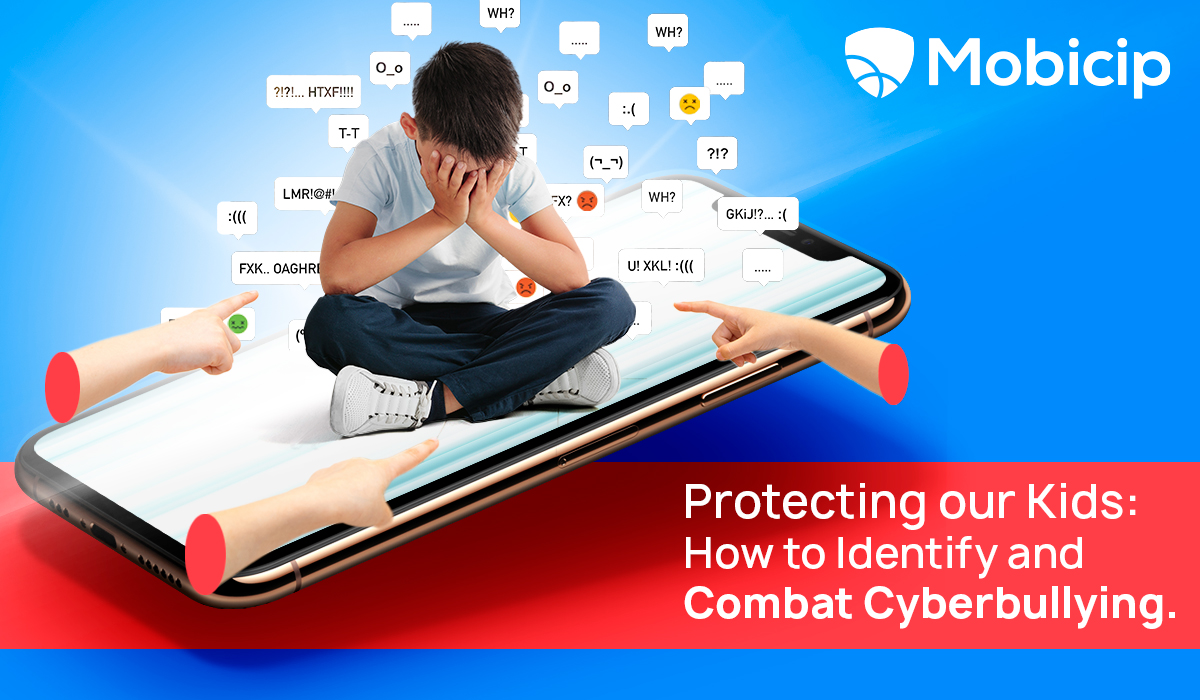New Laws for Online Safety: How Governments Are Protecting Minors

Laws for online safety are being introduced worldwide to protect minors from the growing risks they face in digital spaces. This is critical given the amount of time children and teens are spending online. According to the United Nations, 77 percent of people aged 15 to 24 were using the internet in 2023, and this number continues to grow, making these protections more urgent than ever.
In this article, we’ll explore the key laws being implemented in different countries to safeguard children online. We’ll also look at how Mobicip can help families support their children’s safety, while staying aligned with these evolving legal standards.
The Need for Laws for Online Safety
From smart toys and voice assistants to gaming apps and AI-powered learning platforms, technology is seamlessly woven into the daily lives of children and youth today. Artificial intelligence (AI), in particular, now shapes much of what children see, hear, and do online, suggesting videos to watch, games to play, and even people to engage with.
But as digital platforms evolve rapidly, safeguards to protect young users haven’t kept pace. This has opened the door to a range of serious risks:
Sexual exploitation and abuse
Online predators take advantage of children’s innocence and trust, often posing as friends or using “pretend play” to manipulate them. This can lead to children sharing explicit images or even having unsafe real-life encounters. Child Sexual Abuse Material (CSAM), depiciting a child in sexual acts, whether created by abusers or self-generated under pressure, are serious problems that can cause lifelong trauma and violating the child’s right to safety and dignity.
Cyberbullying
Cyberbullying is a persistent and pervasive problem, with 47% of young people reporting being victims around the world. Abuse can follow children across platforms—through social media, gaming, or messaging apps—and often continues beyond school hours, leaving no safe space. Children can face emotional mistreatment through targeted insults, exclusion, or hate speech. Constant exposure to harmful content can lead to anxiety, self-harm, or suicidal thoughts.
Data misuse, scams and manipulative marketing
Children often don’t recognize when they are being tracked, manipulated, or tricked into sharing personal data. Dark patterns and targeted ads can push them to spend money or reveal sensitive information. Scammers lure children with fake prizes or game access in exchange for login or payment details. Clicking unknown links can also result in malware being downloaded, putting family devices and data at risk. Youngsters are also manipulated by clever marketing to purchase unnecessary products or buy into dangerous ideas. UNICEF reports that 14-year-olds are exposed to as many as 1,260 ads daily on social media alone. Roles like influencer marketing or eSports can lead to economic exploitation and blur the line between play and work. Violent extremist groups have used online platforms to lure children into their cause.
Permanent digital footprints
Children often post photos, videos, or comments without realizing that digital content is rarely ever deleted. What seems harmless today could resurface years later—impacting college admissions, job prospects, or personal relationships. With no real “delete” button on the internet, it’s important for children to think before they share. Teaching them about the long-term consequences of online actions is key to building safe and responsible digital habits.
Key Laws for Online Safety Around the World
Governments worldwide are stepping up efforts to protect children online through dedicated laws and enforcement measures. These laws regulate the collection of children’s data and prevent exploitation. They also hold digital platforms accountable. Below are some key examples of how countries are working to ensure safer online spaces for minors.
A. United States
The Children’s Online Privacy Protection Act (COPPA) is the primary law protecting children’s online privacy in the U.S. It prohibits websites and apps from collecting personal information from children under 13 without verifiable parental consent.
Key elements of COPPA include:
- Clear privacy policies and parental control over data collection
- Limits on data sharing and behavioral advertising targeted at young users
The Federal Trade Commission (FTC) enforces COPPA, investigating violations and issuing fines. Recent efforts have focused on strengthening enforcement and modernizing COPPA to cover teens up to 16 and address risks from AI and algorithmic profiling. As digital platforms evolve, COPPA continues to serve as a foundation for U.S. efforts to ensure children’s data privacy and safety online.
B. European Union
The Digital Services Act (DSA), effective from 2024, introduces strong safeguards to protect children online across the EU. It holds large online platforms accountable for managing harmful content and algorithmic risks.
Key child-focused measures include:
- A ban on targeted advertising to minors using personal data like location or browsing history
- Transparency rules requiring platforms to explain how recommendation systems work
- Mandatory risk assessments to identify and mitigate harm to young users
- Child-friendly terms of service, written in clear, age-appropriate language
The DSA sets a precedent for platform responsibility, pushing companies to create safer digital spaces for children. With strong enforcement and cross-border scope, it marks a significant shift in how children’s rights are protected online across Europe.
C. United Kingdom
The Online Safety Act (OSA), enacted in 2023, places a legal duty of care on online platforms to protect users—especially children—from harmful or illegal content. It compels companies to actively reduce risks related to mental health, bullying, grooming, and exposure to inappropriate material.
Key features of the OSA include:
- Age verification to prevent children from accessing adult content
- Robust content moderation and prompt action on user complaints
- User-friendly safety tools for children and parents
Ofcom, the UK’s communications regulator, enforces the law, imposes substantial fines for transgressions and blocks services that do not comply.
D. India
India’s Information Technology Act, 2000 provides a basic framework for online regulation but lacks child-specific protections. The Indian Governme not introduced the Digital Personal Data Protection Act in 2023, followed by the draft Digital Personal Data Protection Rules, 2025, released by the Ministry of Electronics and Information Technology.
These draft rules aim to operationalize the Act by strengthening safeguards for personal data—especially that of children and persons with disabilities. Key provisions include:
- Mandatory parental consent for processing children’s data
- Age-gating mechanisms and simplified data notices
- Security safeguards and breach notification requirements
- Establishment of a Data Protection Board to enforce compliance
How Governments Are Enforcing Online Safety
Governments around the world are stepping up enforcement to ensure online platforms take children’s safety seriously. As digital threats become increasingly complex, voluntary guidelines are no longer sufficient. Regulatory bodies are now issuing steep fines, demanding transparency, and requiring platforms to assess and mitigate risks proactively. Social media and gaming apps—where children often spend the most time—are under increasing scrutiny, with countries introducing stricter laws, oversight mechanisms, and penalties for non-compliance.
Increased penalties for non-compliance
Governments are holding tech companies accountable through steep financial penalties. In the U.S., for example, the Federal Trade Commission (FTC) can enforce COPPA by fining companies up to $42,530 per violation. In addition to civil fines, violators may also face criminal charges, civil lawsuits, and state attorney general investigations for breaching child protection laws or mishandling personal data.
Mandatory risk assessments for platforms
Several countries now require platforms to conduct mandatory risk assessments to identify and reduce online harms. Under the UK’s Online Safety Act, platforms must assess and document risks to children based on factors such as algorithmic content delivery, user interactions, and exposure to harmful material. These assessments must be updated regularly and made available to regulators. Non-compliance may result in significant fines or operational restrictions.
Stricter regulations on social media and gaming apps
Governments are introducing targeted regulations to protect children on the platforms they use most. These include:
- Age verification mechanisms to restrict access to age-inappropriate content
- Limits on targeted advertising and tracking of minors
- Content moderation requirements to swiftly remove harmful material
- Parental control tools and safer default settings for minors
These measures aim to make the digital environment safer, especially where children spend the most time online.
Challenges in Implementing Laws for Online Safety
Creating safer online spaces for children is no longer just a policy ambition—it’s a necessity. But as digital platforms become more complex and integrated into everyday life, even the strongest laws face practical roadblocks. Policymakers must respond not only to technological change but also to shifting social norms, global disparities, and powerful corporate interests. Ensuring that safety regulations are not only written but actually work in real life is one of the most pressing issues of our time.
Balancing child protection with privacy rights
Safeguarding children online often requires collecting and analyzing user data to verify age or monitor activity. However, this can raise serious privacy concerns. Striking the right balance between protecting children and respecting their rights to privacy and freedom of expression is a delicate and ongoing debate.
Enforcement difficulties across different jurisdictions
Online platforms operate globally, but laws differ across countries. What’s illegal in one nation may be permitted in another, making it difficult to enforce safety rules consistently. Cross-border cooperation is improving, but enforcement still lags due to varying regulations, legal systems, and priorities.
The evolving nature of online threats
Online risks—from cyberbullying and sexual exploitation to scams and AI-driven manipulation—are constantly changing. As new technologies emerge, regulations often struggle to keep pace. This lag creates gaps in protection and makes it difficult for laws to address the full range of threats children face online today.
The Role of Parental Control Solutions
While governments are working to make the digital world safer for children through laws and regulations, parents still play the most critical role. Online risks evolve rapidly, and legal measures often take time to catch up. That’s where parental control solutions come in. Tools like Mobicip bridge the gap by offering real-time protection, monitoring, and filters tailored to each child’s needs. These solutions empower parents to stay informed, involved, and proactive about their child’s digital life.
How Mobicip Supports Laws for Online Safety
Mobicip is a comprehensive parental control tool designed to align with key legal requirements like COPPA, GDPR-K, and the UK’s Online Safety Act. It supports parents in fulfilling their duty of care through the following features:
- Content filtering: Blocks age-inappropriate websites and apps
- Screen time scheduling: Helps enforce healthy digital habits
- Location tracking: Offers real-time visibility of a child’s whereabouts
- App monitoring: Reviews app usage and blocks harmful platforms
- Browsing history: Gives insight into online behavior across devices
- Social media tracking: Flags risky interactions or content
- Alerts and reports: Sends real-time updates to parents about potential risks

Importance of parental involvement in digital safety
No software can replace open communication. Children are more likely to stay safe online when they feel they can talk to their parents. Discussing digital boundaries, risks, and responsible behavior helps build trust and empowers kids to make better choices when faced with harmful content or interactions.
Comparison of government laws for online safety and private solutions
Government regulations are essential for setting minimum safety standards and holding tech companies accountable. Laws like COPPA (U.S.), the Digital Services Act (EU), and the Online Safety Act (UK) mandate how platforms must treat children’s data, limit targeted advertising, and require risk assessments. However, these rules are broad, apply mainly to companies, and often lag behind rapidly evolving technologies. Enforcement can be slow and reactive, and many regulations rely on self-reporting or require significant resources to monitor violations effectively.
Parental control solutions like Mobicip, on the other hand, offer real-time, customizable protection that operates at the family level. While laws provide the framework, tools like Mobicip empower parents to apply those principles daily. For example:
- While laws may ban inappropriate content, Mobicip actively filters it at the device level.
- Where regulations require transparency, Mobicip provides detailed usage reports to parents.
- Government rules may call for safe design, but Mobicip allows for individualized safety settings based on the child’s age and maturity.
Together, government policies and parental control tools form a layered defense. Laws set the standards; solutions like Mobicip help families enforce them in practical, immediate ways.
Conclusion
Ensuring online safety for children is not a one-time fix but an ongoing responsibility that evolves with technology. It requires a shared commitment—between lawmakers who create protective frameworks, tech companies that build with safety in mind, and parents who stay engaged in their child’s digital world. As artificial intelligence and immersive platforms reshape the internet, we must prioritize empathy, ethics, and education in how we guide young users. Digital safety isn’t just about avoiding harm—it’s about enabling children to explore, learn, and connect in environments where their rights are respected and their well-being is protected every step of the way.





